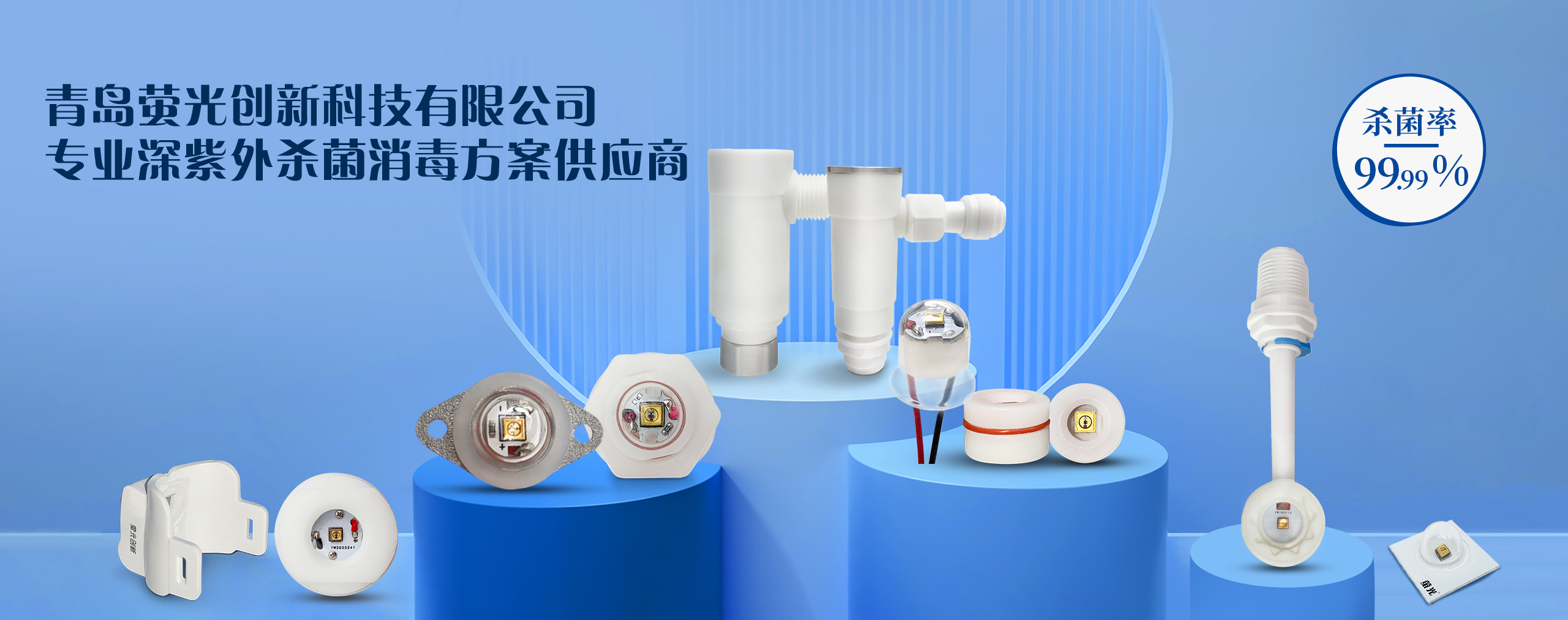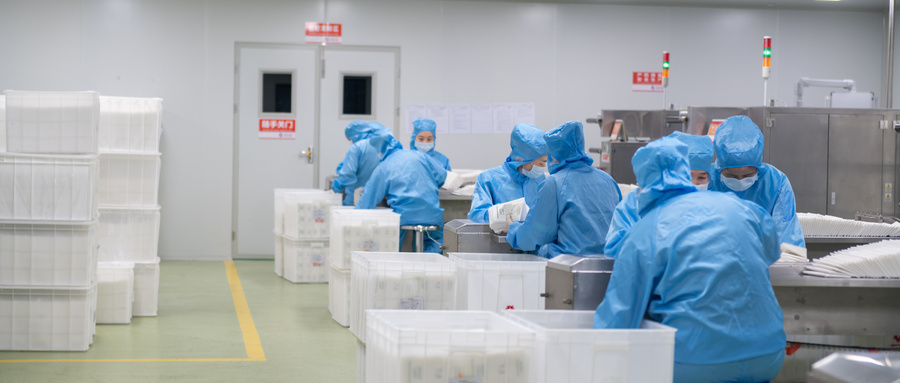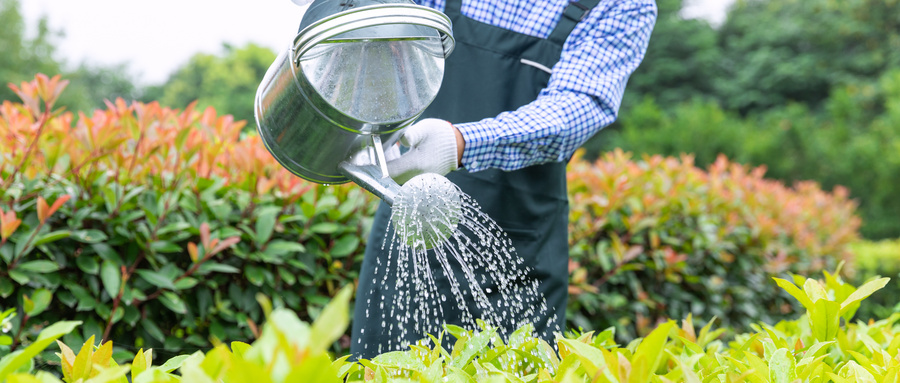UV LED Applications
发布时间:2021-10-19 14:09
来源:萤光创新

Water disinfection
As water becomes an increasingly scarce resource, it is increasingly necessary to implement water treatment practices that emphasize sustainability, non toxicity and effectiveness. Although chemical solutions such as chlorine are implemented at the municipal level, UV treatment provides an additional layer of protection against the accumulation of microorganisms and biofilms in the water supply and is an effective point of use disinfection method. UVC light can penetrate bacteria, viruses, molds and other pathogens and inactivate nucleic acids that allow bacteria to reproduce. This radiation makes pathogens harmless and allows the safe use of water without changing the taste, smell or transparency of the water. Since stubborn bacteria such as Giardia and Cryptosporidium cannot be effectively treated with chemicals such as chlorine, ultraviolet radiation can be an efficient and powerful water treatment solution.
UVC LED is a fast sterilization, non-toxic and heavy metal free disinfection method. Compared with traditional mercury lamps, UV LED is a more flexible and targeted disinfection method, because the peak wavelength of inactivation varies according to the type of pathogen. Although the lamp system can achieve high throughput at 254.7 nm, the UV LED at 280 nm can achieve similar inactivation effect with less power consumption each time. UV LED also adopts low-power design, which opens up innovative designs using water disinfection technology, such as battery powered water bottle or faucet connection module. With greater flexibility in shape and wavelength, UV LED is in a favorable position to provide non-toxic and revolutionary water treatment methods, while continuously improving the efficiency and integration of UV LED system.

Food and beverage processing
Due to the waste and loss of almost all food production levels, up to 33% of all food produced for human consumption in the world are discarded. In addition, there are about 48 million cases of foodborne diseases every year, so the demand for effective control of pathogens in our food and beverage production is very important. UV irradiation of LEDs provides an effective and safe way to disinfect our food and facilities to reduce waste and pollution. In addition to traditional methods such as chemical solution and washing, UVC radiation can also effectively inactivate common pathogens in food, such as Salmonella, Listeria and Escherichia coli. For fresh agricultural products, meat and other foods that are particularly vulnerable to bacterial corruption, the use of ultraviolet radiation in the packaging process can reduce the speed of food pollution and waste and prolong the shelf life. In plants such as tomatoes, UVC flux has even been proved to change the internal mechanism of plants, so as to slow down the decay of fruits. Milk pasteurization and disinfection UVC LED can be used as an efficient, non-toxic and residue free disinfection method, while retaining the nutritional value and sensory characteristics of food. It has been found that using ultraviolet irradiation instead of liquid pasteurization is more effective and cost-effective for the disinfection of milk, fruit juice and broth. Although pasteurization has been widely used as an effective method to remove microorganisms, the high temperature involved in this process will change the taste and nutritional composition of beverages. UV LED is expected to replace pasteurization method to ensure liquid safety because it can disinfect without changing taste or nutritional value.

Air purification
Up to 91% of the world's population lives in areas with poor air quality. Ensuring the cleanness and safety of the air in our homes, hospitals and the world is crucial to our health and climate. Although HEPA filters are widely used to capture pollutants in the air in many indoor environments, they cannot capture some pathogens and microbial pollutants in the air. In addition, many dark and humid air conditioning, heating and humidification systems may be hotbeds for the growth of bacteria, fungi and viruses, making human beings unknowingly exposed to potentially harmful air. Ultraviolet sterilization irradiation can quickly inactivate the proteins and nucleic acids necessary for microbial reproduction, which has become an extremely effective method to reduce bacterial growth. Although mercury lamps are now widely used, UV LEDs open the door to innovative solutions to keep our air system units clean and safe in inaccessible areas that are not always considered. Air microbial filtration: Modeling and prediction (Kowalski, bahnfleth, Whittam) led is compact and can adopt compact high-power design to reduce pathogens in the air. UV LEDs can inactivate elastic microbial strains passing through HEPA filters and are very effective in combination. This is particularly important in sensitive environments such as hospitals, where hospital acquired infection (HAI) has attracted attention. These nosocomial infections have the highest HEPA filter permeability because they can pass through the filter and continue to infect the air. UV LEDs can also produce greater light output flux and shorter irradiation time through pulses without preheating. When designing a purifier with an LED, the exposure to the shaded area can be increased by using an aluminum reflector.

Medical disinfection
The high incidence of hospital acquired infection has aroused people's attention to the stubborn bacteria that are difficult to be eliminated by traditional cleaning methods. Ultraviolet light can effectively and quickly eradicate bacteria, such as Clostridium difficile, which is one of the most common bacteria in hospitals. Traditional cleaning methods using bleach and wet wipes have always failed to achieve the lethal dose required to eliminate nosocomial infection (HAI). To some extent, the problem becomes more serious as these bacteria begin to develop resistance to biocides. Since hospital acquired infections (HAI) cause up to 15000 deaths each year, it is important to find ways to eradicate these pathogens. Although automation solutions such as hydrogen peroxide vapor, ozone and excimer lamp system show great prospects, UVC LED provides the best experience for patients and hospital staff, and has obvious advantages over lamp. The use of UV LED disinfection in wards means no toxic substances, shorter inactivation time, ease of use and cost-effectiveness. They have instant switching capability, can be used with automatic or remote methods, long service life and low power consumption. With narrow spectral band and wavelength tunability, UV LEDs can also be used to inactivate faster and target bacterial populations more accurately. UV LED has long service life and less design flexibility. It can be used for disinfection of medical equipment, patient personal equipment and ward. Since mercury is undesirable in hospitals and other sensitive environments where accidental exposure may occur, UV LEDs provide an alternative to lamps that can produce reliable UVC sterilization exposure.

gardening
Modern day lighting systems have successfully achieved plant growth and crop production throughout the year, even in places with less sunlight. In addition to providing supplementary lighting in greenhouse scenes, artificial lighting using specific visible spectra has been used for indoor gardening. The introduction of ultraviolet light into such scenes can be regarded as a new paradigm of modern horticulture. Its purpose is not only to supplement by providing sufficient levels of ultraviolet light to simulate sunlight, but also to induce positive and mild stress required to stimulate plant oxidative stress pathway and antioxidant mechanism. Ultraviolet light triggers the production of phenolic compounds responsible for antioxidant and anti free radical activities. It has been proved that the use of ultraviolet light on plants such as tomatoes and vegetables also contributes to sensory characteristics, making the products more visually attractive and delicious. In addition, UV has proved to be a sustainable chemical free treatment method, which can resist powdery mildew of many crops. Lettuce UV LED under UV lamp can improve the nutritional and sensory quality of many crops, and help protect crops by inhibiting pathogens. UV LEDs from UVA area to deep UVC wavelength have opened a new era of horticultural lighting by providing sufficient intensity and dimming control for optimal plant growth. With a specific target wavelength and flexible design, UV LEDs can be used in series with their visible counterparts for horticultural lighting. You can also create broadband spectral arrays using specific wavelength combinations for specific crops. The lower power consumption, greater design flexibility, variable intensity, spectral control and no preheating time provided by UV LED provide exciting opportunities for Nutrient Improvement and pathogen inhibition.
Qingdao fluorescent Innovation Technology Co., Ltd. has a professional postdoctoral team, focusing on the research of ultraviolet sterilization application. After years of deep cultivation in the ultraviolet industry, the company has obtained a number of national invention and utility model patents. At present, a number of sterilization module products have been put into the market. For more details, you can browse the company website www.qdyingguang.com, contact the company for WeChat's official account.

Keywords: UVC, UVC led, deep UV, UV sterilization, deep UV LED, water sterilization, water disinfection, air disinfection, flowing water sterilization, static water sterilization
